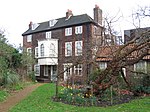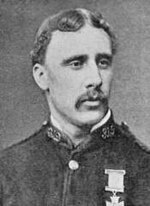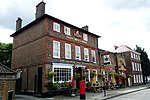Chiswick House

Chiswick House is a Neo-Palladian style villa in the Chiswick district of London, England. A "glorious" example of Neo-Palladian architecture in west London, the house was designed and built by Richard Boyle, 3rd Earl of Burlington (1694–1753), and completed in 1729. The house and garden occupy 26.33 hectares (65.1 acres). The garden was created mainly by the architect and landscape designer William Kent, and it is one of the earliest examples of the English landscape garden. After the death of the 3rd Earl of Burlington in 1753, and the subsequent deaths of his last surviving daughter (Charlotte Boyle) in 1754 and his widow in 1758, the property was ceded to William Cavendish, 4th Duke of Devonshire, Charlotte's husband. After William's death in 1764, the villa passed to his and Charlotte's orphaned young son, William Cavendish, 5th Duke of Devonshire. His wife, Georgiana Spencer, a prominent and controversial figure in fashion and politics whom he married in 1774, used the house as a retreat and as a Whig stronghold for many years; it was where Charles James Fox died in 1806. Prime Minister George Canning also died there in 1827, in a bedroom in the John White wing buildings. During the 19th century, the house fell into decline and was rented out by the Cavendish family. It was used as a mental hospital, the Chiswick Asylum, from 1892. In 1929, the 9th Duke of Devonshire sold Chiswick House to Middlesex County Council, and it became a fire station. The villa suffered damage during World War II, and in 1944, a V-2 rocket damaged one of the two wings, which were both demolished in 1956. Today, the house is a Grade I listed building and is maintained by English Heritage.
Excerpt from the Wikipedia article Chiswick House (License: CC BY-SA 3.0, Authors, Images).Chiswick House
Grand Allee, London Grove Park (London Borough of Hounslow)
Geographical coordinates (GPS) Address External links Nearby Places Show on map
Geographical coordinates (GPS)
| Latitude | Longitude |
|---|---|
| N 51.483833333333 ° | E -0.25869444444444 ° |
Address
Chiswick House
Grand Allee
W4 3EY London, Grove Park (London Borough of Hounslow)
England, United Kingdom
Open on Google Maps









